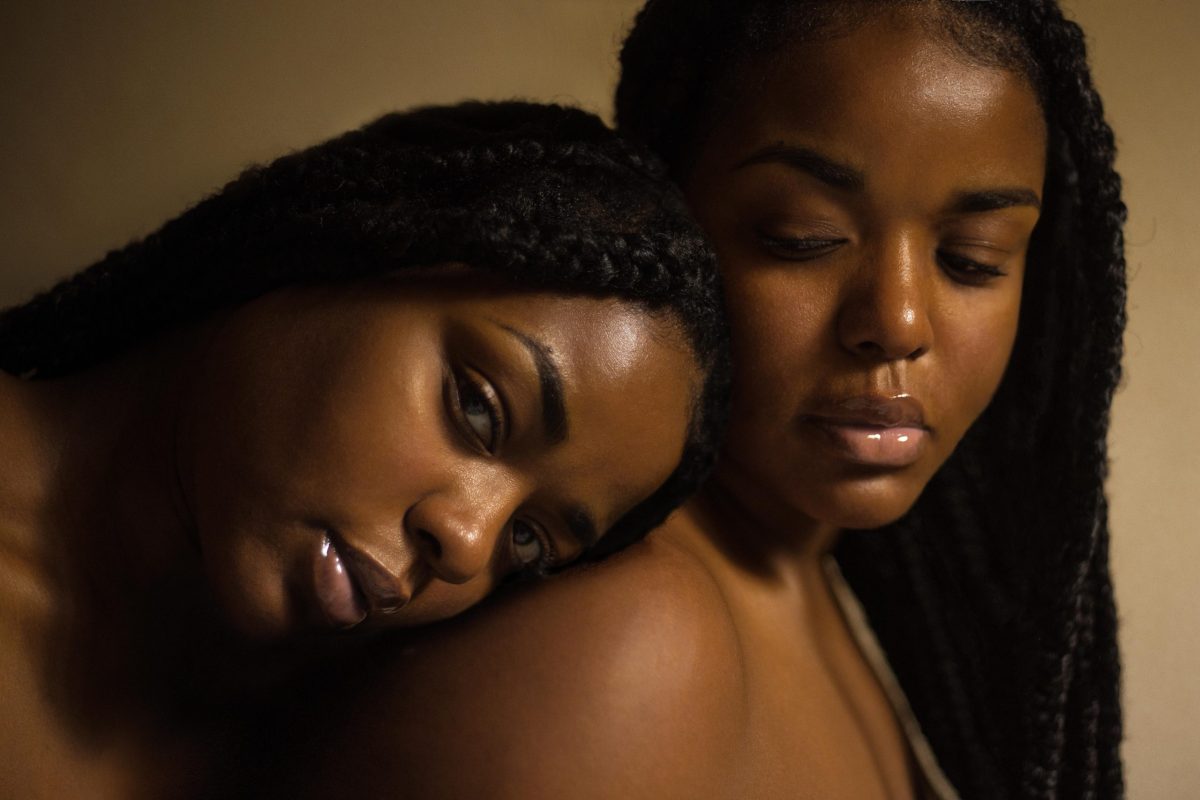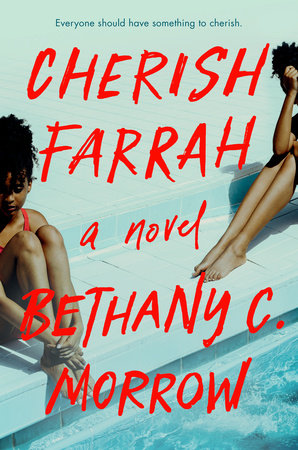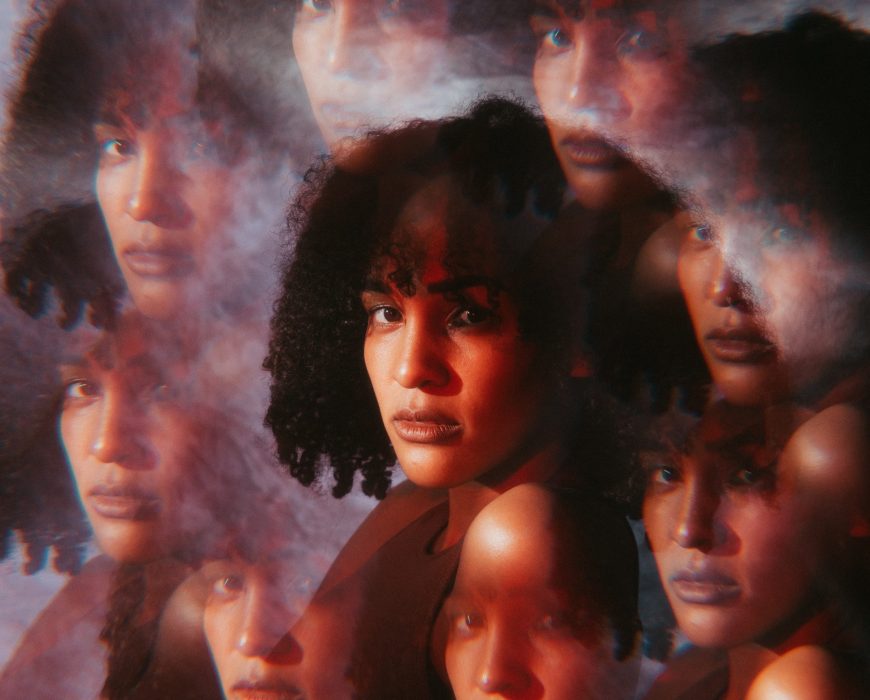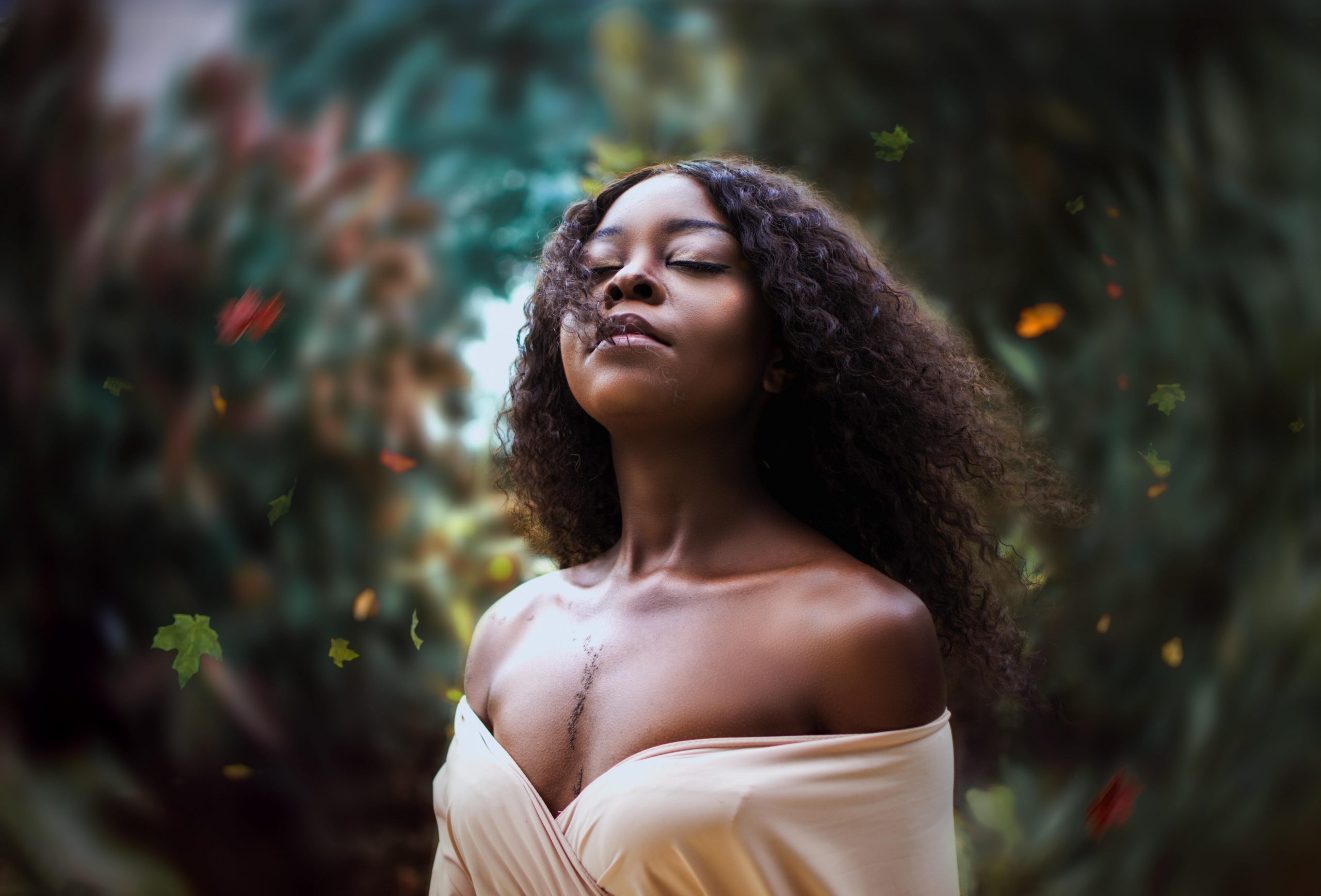interviews
The Coming of Age of Black Social Horror
Bethany C. Morrow's novel "Cherish Farrah" weevils itself under your skin, imbuing a growing dread as it unravels in unimaginable horror

Black horror has come of age. It began as oral tales Black folks would tell each other to pass down cultural warnings and taboos during enslavement and post-Emancipation. In its pubescence, the genre unfurled and infiltrated the written word, as seen in Charles W. Chessnutt’s The Conjure Woman in 1899; and invaded Hollywood only a few decades later, as seen in Oscar Micheaux’s lost film, A Son of Satan in 1924. For far too long, Black horror was seen only as a domain for Black men as Black women’s contributions to the genre were actively overlooked and ignored.
Bethany C. Morrow bursts onto the scene with the unapologetically dark novel Cherish Farrah embracing a lineage of Black women’s horror writing that spans from Zora Neale Hurston’s “Sweat” to Tananarive Due’s The Living Blood to my own co-edited volume of short horror stories written by Black women, Sycorax’s Daughters.
Cherish Farrah revolves around the friendship of two Black teenage girls enmeshed in a world of wealth and privilege. But things fall apart as Farrah’s family begins to face economic hardship. Cherish finds herself willing to do almost anything to keep her friendship with Farrah even as it dawns on her that Farrah will go even further in her pursuit to remain in Cherish’s life
Our conversation below is a celebration of Cherish Farrah’s beautifully insidious ability to weevil itself under your skin, imbuing you with growing dread as it unravels in unimaginable horror.
Editor’s note: This interview was hosted virtually by Loyalty Bookstore on February 10th 2022.
Dr. Kinitra Brooks: I specialize in Black women and the horror genre, and I like to highlight that Black women have long enjoyed, and created within, the horror genre. We have simply been erased and willfully ignored. Horror is our thing. When Black women write horror, it often pushes the boundaries of what is considered horror. We literally change the definitions of horror as we create it.
There’s a critic-philosopher, Noël Carroll, he divides horror and gives it an ability for us to speak about it or define it more easily. He talks about horror, as in the horror associated with enslavement, with Jim Crow, and, in the other sense, he talks about art horror, which is the horror that focuses on social critique. And the thing about Black horror is that we do both. We do not simply wallow in the trauma as a lot of the supporters of “all Black horror is only trauma” claim. We also get to explore, to play, to push back, and to be subversive in the realm of art horror.
One of my goals is to show that expansiveness of horror and that horror has sub-genres because it is also a business based on consumerism, and the audience wants to know what horror conventions to expect. What are the conventions of social horror and what should the audience expect in encountering it?
BCM: Of course, we’re gonna be the most familiar and, by “we,” I’m being really generous and, and making it sort of like “our society”; obviously Black people usually know better, but I think that we are gonna be most familiar with Jordan Peele’s Get Out as the thing that seemingly brought social horror to the fore. And so we recognize it as almost sociological horror. It’s a type of horror that is very much based on an awareness, and an acknowledgement of, the institutions and the systems of inequality and oppression that actually exist in our own world. And because of that, it finds itself being either led, dominated, or entirely encapsulated at this point by Black American creators because of that awareness that it requires. So I don’t know what that looks like on the page, in terms of, are you gonna have jump scares? Are you gonna have body horror? It can encapsulate any of that. I think the reason that I feel drawn to it, and I think if you are familiar with my collection of work, you’ll see that the thing that crosses over all of it, that umbrellas sort of all of it, is this indictment of the American imagination and of American mythology.
The thing that I love about social horror, and the reason that it was really important to me that my publisher referred to this as social horror—of course people are gonna say psychological thriller and people are gonna say a lot of different things—because social horror, for me, demands acknowledgement of something that a large portion of our society has been allowed to deny. Part of the horror of white supremacy is the gaslighting, the claiming that what you are actually experiencing, what you are going through and what is being intentionally done to you, isn’t actually happening: That’s actually already been resolved. That’s not even happening anymore. You’re being a victim. You’re living in the past. That’s not real anymore.
What I thought was brilliant in Get Out is that the final scare is police lights and that’s the final scare for the entire audience. This is presented as a scare for the audience. It’s not just a scare for Chris, the main character. And the reason that that’s brilliant is because it comes out in a time where, just like during the height of the Civil Rights Movement, when they would interview white people and be like, “Do you think that Negroes suffer from..?” and then some white woman on her way to the grocery store would be like, “I don’t think that they are, I think that we are all equal and I don’t know what they’re talking about.” That’s what we’re still dealing with. We’re still dealing with people pretending not to understand state violence, specifically against Black Americans, and the terror and the brutalization that comes from that. So the fact that the final scare in this horror film is simply police lights requires that the audience understand and acknowledge that threat in order to experience that. And I watched it in the theater. So I know a lot of you did experience it and understand it and it’s like, gotcha. That’s what social horror does. It basically forces the audience to tell on themselves, you know: this is real, you know exactly what I’m talking about. Cause if you didn’t, you couldn’t enjoy this. You couldn’t partake. Social horror to me is genius because it requires people to acknowledge something that they have been gaslighting us about.
KB: I love how you talk about the specificity of social horror and yet still there’s so much room to play, and to explore the other different types of horror, because it is not excluding horror and the joy of the horror genre, it’s actually encompassing. Horror has often had an underlying social critique. How does Cherish Farrah add to the conversation about social horror?
BCM: In the same way that I have to do this with all of my work. If you think about the follow-up to A Song Below Water, which was A Chorus Rises: when I wrote A Song Below Water, because it came out in June 2020, the audience was primed to wrap their arms around this perfect victim of a Black girl character. This girl who very clearly is suffering from self-doubt and all of these sort of vulnerabilities. And they were primed to accept her and really rally around her. But what I found, and the reason that I wrote A Chorus Rises, is because of the way that that same audience responded to another Black character. I’m always gonna have many Black girls and women in my stories, of course, because that’s my target audience. That’s who I am trying to write to, and for. And because she wasn’t one of the vulnerable girls, because she wasn’t one of the girls who was stuck between a rock and a hard place, because she wasn’t a girl who was struggling with her identity and her self-worth, she got called the antagonist in a book that was about white supremacy. How is the antagonist in white supremacy a 16-year-old girl?
So the reason I wrote that book was because we’re getting out of this 101 discussion, we’re getting out of this this liberalism that says, I absolutely am here for your liberation, And then the quiet part is, as long as you do it this way, and you look this way and you behave this way and just, you know, try to be kind… No. Liberation means we get to be our full and complete self. We get to be fully fleshed out. I want to see that messiness. And if I don’t ever see that messiness, that means we’re still playing respectability politics. We’re deciding that there is a right protagonist, a right Black girl who gets to be center stage. And if you don’t look like her and you don’t sound like her and you don’t act like her, we don’t have any space for you. So what I want to do with social horror and what I hope to have done with Cherish Farrah is [challenge] something that people are accustomed to with social horror right now. Especially things like Get Out, and the things that have come after it, is this sort of almost sanitized main Black character who makes it really easy for you to understand that they are not doing anything wrong.
That’s really important to understand, that they couldn’t possibly do anything wrong; in the case of Chris from Get Out, almost because he doesn’t have a personality. We don’t know very much about him at all. We know that he smokes. We know that he feels guilty over his mother and we know he’s a photographer and that’s pretty much it. That plays beautifully in the film because it doesn’t give the audience a chance to apply that anti-Blackness that we know is ingrained in them. It doesn’t give them a chance to decide whether he deserves sympathy or not. But my thing is, I’m not satisfied with that. I’m not satisfied with having to be the perfect victim for people to see what’s being done to you. So I didn’t want a blank slate character. And particularly for a Black girl, I don’t want a blank slate character.
Something’s wrong with Farrah, guys? I think we can just be honest. It’s not a secret. Something’s wrong with her. She is actually, um, a budding psychopath. I want to allow this girl who is very obviously manipulating, very obviously using people; she’s pressing down on wounds. She is not a good protagonist. She’s not a good victim. Does that mean that she’s not a victim of anything? And so she was a really wonderful character to lead with because she in herself is sort of like the red herring. You think this story is about the fact that she’s a villain. She cannot undo or discount the reality of systemic oppression and the ongoing campaign of anti-Blackness and misogynoir in this country. If you get distracted by the fact that she is a psychopath and can’t acknowledge that other stuff is happening… it’s that kind of challenge. I’m always pushing the conversation out of this need for Black people to be anything in particular, in order for people to be able to metabolize their story. Like, no, she’s a problem.
KB: I love that you are exploring these spectrums of Black girlhood and that we’re getting this complexity. We see that with your construction and characterization of Cherish, as well as Farrah. And for me in my head, they blurred a lot, even though they’re totally different. They don’t look alike, anything like that, but they blurred together a lot. Are they doppelgängers of each other, or is something more complex going on?
BCM: This is an interesting thing that does absolutely have to do with race and also has to do with individuality and the multiplicity of Blackness, because if you look at it through the lens of how we are reduced as Black people and particularly Black women: my picture has been credited to Dhonielle Clayton, Dhonielle Clayton’s name has been attached to pictures of Tiffany D. Jackson, L.L. McKinney has been called Tracy Deonn. We are accustomed to this and these are things that you can easily, with a cursory Google, figure out that we are different people, aside from the fact that I am taller than all of my beloveds. And I don’t know how I keep getting confused with my tiny girls. My first reaction to people feeling like they’re doubles or their doppelgängers was like, I wonder what goes into that. My thinking when I first was seeing this was like, I know that I don’t describe my characters very much. It just doesn’t occur to me that that’s important. So there’s nothing on the page that says they look alike. Why are they being referred to as doubles or doppelgängers?
[Black social horror] is based on an awareness of the systems of inequality and oppression that exist in our own world. And because of that, it’s led, dominated, or entirely encapsulated by Black American creators.
With the nuance and complexity that we could talk about, there is a way that it doesn’t matter what they look like, because they become so intrinsically a part of each other. That’s a part of what Farrah is talking about with this void. She literally fills the center of Cherish, meaning Cherish is indistinguishable and cannot survive without Farrah and, arguably, vice versa. They have such a toxic intimacy. Even in their world, nobody challenges this relationship. And part of the reason I did that also was because that part has nothing to do with the psychopathy. That part doesn’t necessarily find all of its roots in being Black girls, living in a a white nationalist country. Because having been a teenage girl, I remember those extreme, dramatic, toxic relationships. You’re talking about a time developmentally where you’re not fully complete, and won’t be for a long time. Your brain chemistry is completely outta whack. If you have reproductive behavior, you are going through something that we treat as normal, that actually should really be devastating. We should be taking sick days.
You are in a period of your life where you’re in a demographic that is constantly dehumanized and diminished and devalued and anything teenage girls like is useless and is a joke. Nothing about your existence is taken seriously. It’s all about either consumption or puritanical oppression. That’s how the world treats you. It makes sense to me that at this time, the only other people who really understand you and really understand what all of that is like is another teenage girl. We have sometimes troublingly close relationships at that age. I witnessed a lot of them. I experienced one of them. That part that you’re seeing isn’t because this is horror. That part is real. We should probably look at what we are doing as a society to necessitate those types of attachments. Or we could just wait and see how many of them turn into Farrah.
KB: Those relationships are complex and can be dangerous on their own, but they become really dangerous when one of the folks in that relationship is a psychopath. I really love the way you talk about Farrah’s psychopathy. How it coils and it undulates. At first, I thought you were commenting on how white supremacy affects us all and turns us into monsters and these sorts of things, but that’s not what’s going on with Farrah. What is going on with Farrah that you want us to take into the book?
BCM: Farrah is exactly who she appears to be. And the fact that nobody can see who she is speaks to the reductiveness of the way that Black girls and women are treated by this country.
KB: Speaking of Black mothers, Nicole Turner is my favorite character in the novel. Yet there’s a purposeful isolation of her character that is very different from her lived experience. Would you mind speaking a bit more about her characterization?
Liberation means we get to be our full and complete self. We get to be fully fleshed out. I want to see that messiness.
BCM: It’s simply the way that she’s being portrayed for various reasons, potentially by Farrah. You see Cherish’s mother, Brianne, speak to Nicole as though Nicole is the stronger party and the one who has to make decisions, and as though she shouldn’t really be trying to make things easier for Ben [her husband], because she’s the one who has to shoulder everything, and that’s not even necessarily true. That’s just something that’s just a part of the narrative that Brianne, that the United States, that our culture has decided, is that when women are Black, women are “strong” and “resilient,” they want us for all of these other purposes and none of those purposes speak to our needs. None of those purposes speak to our desire for love. And we go from either being strong, independent women who don’t get love, to—at the first sign that we would actually like to experience love, we would actually like a partner— suddenly being treated like we are desperate. And it’s a pathetic look, the expression that we would like to be in love, that we would like to have love in our lives. Despite that it’s fine for anyone else to say that, for Black women, because this culture has such a use for us in our isolation, as their mules, as their nursemaids, it’s treated as though it’s a failing of ours to desire love. And so this woman who actually has a husband and is a partner and is doing life with someone, she’s treated in this book and she’s represented as though she is in isolation when she’s not.
KB: What I find so galling about this is Brianne herself is very clearly the H.B.I.C. [Head Bitch in Charge] in her marriage. She occupies that power role in her marriage, but she purposely puts it all on Nicole because it’s okay for it to happen with her in how she operates.
BCM: That can just be something that Brianne wanted, but Black women don’t get to have that sort of autonomy and that personhood to have these personal desires and individuality. And so we get reduced down to some stereotype: in her mind, Black women are strongest alone. She’s got to seemingly encourage Nicole to operate as though she is a single mom, even though she’s not, she’s very clearly not.
KB: So many characters create a narrative and they stick to it, no matter what evidence there is to the contrary. So can you discuss a little bit of the dangers of the myopia in the ways in which these characters relate to each other?
Words that were meant to terrify us and brutalize us that we among ourselves might use, it becomes a term of endearment, it becomes something that we take control of.
BCM: Well, Brianne has an air about what it means to be a good white person and what it means to be a good white mother of a Black daughter. She has only one way of seeing Black girls and it’s vulnerable and in need of coddling. And, as though that’s good, because it’s the opposite of the active, brutalization that teenage Black girls have experienced even recently, but, because of that, she is completely incapable of seeing the reality of any of these girls. She’s completely incapable, especially though, of seeing the reality of Farrah. If at any point in the early part of this story, anyone other than Nicole Turner had looked at Farrah and seen Farrah and been like, this is not a normal person at all, this whole book could have been avoided. But the point is that there are these reductive attempts to operate within the construct and the confines of white supremacy in a nicer way. It’s like kinder supremacy. We’re not dismantling it. We don’t need to dismantle it. We just need to be nicer. So that results in, okay, a kinder stereotype, but that’s still dehumanizing because, what if that’s not me?
KB: Can you say a quick word about white girl spoiled?
BCM: “White girl spoiled” was actually quoted today in a review [by Anita Felicelli at Alta] that I really, really enjoyed because it was in Farrah’s words. And she’s talking about the fact that it’s infantilization to the point of coddling, to the point of incompetence, to the point of arrested development. It sounds like a sort of harmless, benign thing. You kind of have to understand Black culture to understand why people would hear her say this over and over and not take offense to it. The way that terms of endearment sometimes work; we can repurpose, and have repurposed, a lot of things that were meant to be hurtful, to be dehumanizing. And we have taken them into our community and turned them into something else. Words that were meant to terrify us and brutalize us that we among ourselves might use, and it becomes a term of endearment, it becomes a colloquialism, it becomes something that we take control of.
While you would think, like, okay, her saying, you’re white girl spoiled… as critically thinking as Farrah is, and as cutting as she is, you probably should assume that it’s not some silly, benign thing that she’s saying. She’s literally saying, almost to Cherish’s face, why Cherish can be inhabited by Farrah, why Farrah can sort of own Cherish, because she has this void that comes specifically from the fact that she has a type of privilege and a type of coddling and a type of arrested development that is dangerous for a Black girl to have, that was never intended for a Black girl to have, and means that, outside of this little bubble that her parents have created, she won’t survive. She can’t survive without somebody like Farrah.









